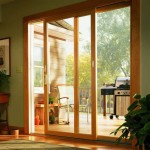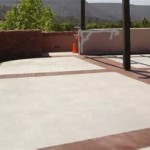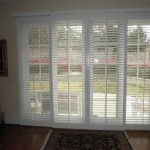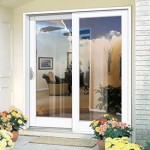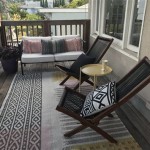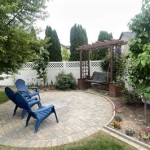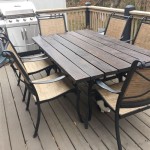Designing the Ultimate Outdoor Covered Patio with Fireplace
An outdoor covered patio with a fireplace represents a significant enhancement to any property, creating a versatile space for relaxation, entertainment, and extending the usability of the outdoor area throughout the year. Careful planning and execution are crucial to ensure the patio not only complements the existing architecture but also meets the specific needs and aesthetic preferences of the homeowner.
The integration of a fireplace into a covered patio design offers several advantages. Beyond providing warmth during cooler months, it acts as a focal point, adding visual interest and ambiance to the outdoor space. The crackling fire creates a relaxing and inviting atmosphere, encouraging social gatherings and comfortable solitude. Furthermore, a well-designed fireplace can increase property value, making it a worthwhile investment.
Effective design considerations for an outdoor covered patio with a fireplace encompass various factors, including size, materials, style, and functionality. Attention to these details ensures a cohesive and harmonious outdoor living space that seamlessly blends with the surrounding environment.
Key Design Considerations for Outdoor Covered Patios
Before embarking on the construction of an outdoor covered patio with a fireplace, several vital design elements must be thoroughly addressed. These encompass structural integrity, material selection, fireplace placement, and overall aesthetics. Neglecting any of these aspects can result in a less functional or visually appealing outcome.
Structural Integrity: The initial step involves assessing the structural requirements of the patio cover. This includes considering local building codes, wind loads, snow loads (in relevant climates), and the foundation’s capacity to support the structure. A licensed engineer or architect should be consulted to ensure the design meets all safety standards and regulations. The cover can be constructed from various materials, including wood, metal, or composite materials, each with its own strengths and weaknesses regarding durability and aesthetic appeal. The design must also account for proper drainage to prevent water accumulation on the roof, which could compromise the structure's integrity over time.
Material Selection: Choosing the right materials for the patio cover and fireplace is crucial for both aesthetic appeal and longevity. For the patio cover, options include natural wood (cedar, redwood), which provides a warm and classic look but requires regular maintenance; metal (aluminum, steel), which offers durability and low maintenance but may require painting or powder coating; and composite materials, which mimic the look of wood but are more resistant to rot and insects. For the fireplace, options include brick, stone, concrete, or stucco. The materials should be chosen to complement the existing architecture of the house and the overall design style of the outdoor space. The fireplace material must also be heat-resistant and comply with local fire codes.
Fireplace Placement: The location of the fireplace is a critical decision that impacts both functionality and aesthetics. Ideally, the fireplace should be positioned to maximize its visual impact and create a focal point for the patio. Considerations include the prevailing wind direction to minimize smoke blowing back into the seating area, the proximity to the house to avoid fire hazards, and the integration with the overall layout of the patio. The fireplace should also be positioned to provide a comfortable warmth to the seating area without being overwhelming. Options include placing the fireplace at one end of the patio, in the center as a room divider, or as a built-in feature along a wall.
Aesthetic Integration: The overall design of the patio should seamlessly integrate with the existing landscape and architecture of the house. This includes considering the color palette, the style of the patio cover, and the design of the fireplace. Elements such as landscaping, lighting, and outdoor furniture should be carefully chosen to complement the overall design and create a cohesive and inviting outdoor space. The design should also consider the views from the patio, ensuring that the fireplace does not obstruct desirable vistas.
Types of Fireplaces Suitable for Covered Patios
Various fireplace options are available for outdoor covered patios, each offering distinct advantages and disadvantages. The selection depends largely on budget, fuel source preferences, and aesthetic considerations. Options range from traditional wood-burning fireplaces to modern gas or electric models.
Wood-Burning Fireplaces: These offer the classic appeal of a real fire, with the crackling sound and natural aroma creating a cozy and inviting atmosphere. However, they require a constant supply of wood, produce smoke and ashes, and necessitate regular cleaning. They also require a chimney or flue for proper ventilation, which can add to the installation cost. Building codes often restrict the use of wood-burning fireplaces in certain areas due to air quality concerns. Consideration should be given to the proper storage of firewood, keeping it dry and readily accessible.
Gas Fireplaces: These offer the convenience of instant ignition and adjustable flame control. They burn cleaner than wood-burning fireplaces, producing less smoke and ash. They can be fueled by natural gas or propane, requiring a gas line to be installed to the patio. Gas fireplaces are available in a wide range of styles and sizes, from traditional to contemporary, making them a versatile option for different design preferences. Safety features such as automatic shut-off valves are essential for gas fireplaces.
Electric Fireplaces: These are the easiest to install, requiring only a standard electrical outlet. They produce no emissions and require no venting, making them a clean and safe option. Electric fireplaces offer adjustable heat settings and realistic flame effects, creating a comfortable and visually appealing atmosphere. While they don’t offer the same level of heat as wood-burning or gas fireplaces, they are suitable for smaller patios or for providing supplemental heat. They are also a good option for areas where wood-burning or gas fireplaces are prohibited.
Outdoor Fire Pits: While technically not fireplaces, fire pits can be incorporated into a covered patio area. These are typically lower to the ground, offering a more casual and communal gathering space. They can be fueled by wood, gas, or propane, and are available in various shapes and sizes. When using a fire pit under a covered patio, it is essential to ensure adequate ventilation to prevent the build-up of smoke and carbon monoxide. Building codes and safety regulations should be followed when installing and using a fire pit.
Integrating the Fireplace into the Patio Design and Functionality
Integrating the fireplace seamlessly into the overall patio design and ensuring functional usability is a key aspect of a successful outdoor space. This involves considering the placement of furniture, the flow of traffic, and the integration of other outdoor features.
Furniture Arrangement: The furniture should be arranged to maximize comfort and functionality around the fireplace. Seating should be positioned to take advantage of the warmth and ambiance of the fire, while also allowing for easy conversation and interaction. Consider using outdoor rugs to define the seating area and add a touch of comfort and style. Tables and side tables should be placed within easy reach for drinks and snacks. The furniture should be made from weather-resistant materials to withstand the elements.
Traffic Flow: Ensure that the patio design allows for smooth and unobstructed traffic flow. The fireplace should be positioned so that it does not impede movement around the patio. Pathways should be wide enough to accommodate multiple people walking comfortably. Consider the placement of stairs or steps, ensuring they are well-lit and easy to navigate. The layout should also accommodate access to the house and other outdoor areas, such as gardens or swimming pools.
Lighting: Proper lighting is crucial for creating a comfortable and inviting atmosphere on the patio. Consider incorporating a variety of lighting options, including ambient lighting, task lighting, and accent lighting. Ambient lighting can be provided by string lights, lanterns, or recessed lighting in the patio cover. Task lighting should be installed near cooking areas or seating areas where reading or other activities will take place. Accent lighting can be used to highlight architectural features or landscaping elements. The lighting should be energy-efficient and weather-resistant.
Landscaping: Incorporating landscaping around the patio can enhance its beauty and create a more natural and inviting environment. Consider planting trees, shrubs, and flowers to provide shade, privacy, and visual interest. Container plants can be used to add color and texture to the patio surface. The landscaping should be chosen to complement the overall design style of the patio and the existing landscape. Consider using drought-tolerant plants to minimize water consumption. Mulch or gravel can be used to suppress weeds and maintain moisture in the soil.
Weather Protection: The primary purpose of a covered patio is to provide protection from the elements. Ensure that the patio cover is designed to withstand wind, rain, and sun. Consider using screens or curtains to provide additional protection from insects and harsh weather. Fans can be installed to provide ventilation and cooling during hot weather. Heaters can be used to extend the usability of the patio during colder months. The patio cover should be designed to prevent water accumulation and ensure proper drainage.
Entertainment Options: Consider incorporating entertainment options into the patio design to enhance its usability. This could include an outdoor television, a sound system, or a built-in barbecue grill. Wiring and electrical outlets should be installed to accommodate these features. The entertainment options should be chosen to suit the needs and preferences of the homeowner. Consider using weather-resistant equipment and materials.
A well-designed outdoor covered patio with a fireplace can significantly enhance a property's value and offer a valuable extension of living space. Prioritizing careful planning and attention to detail ensures a functional, aesthetically pleasing, and enjoyable outdoor environment.

30 Outdoor Fireplace Ideas Cozy Fireplaces
:max_bytes(150000):strip_icc()/bring-holidays-outside-x-50f80e4865984b36b603a1de82d2938b.jpg?strip=all)
Glowing Outdoor Fireplace Ideas

30 Outdoor Fireplace Ideas Cozy Fireplaces

Michigan S Premier Design And Build Company For Outdoor Fireplaces Built In Fire Pits Ventures

Outdoor Fire Pits And Fireplaces Katy Houston Greater Areas

Outdoor Fireplaces Paradise Red Landscaping

Outdoor Fireplace Ideas Inspiration Dutchies Stoneworks

53 Most Amazing Outdoor Fireplace Designs Ever Modern Patio

10 Outdoor Fireplace Ideas You Ll Want To Copy Bob Vila

How To Build An Outdoor Fireplace Step By Guide Buildwithroman
Related Posts

